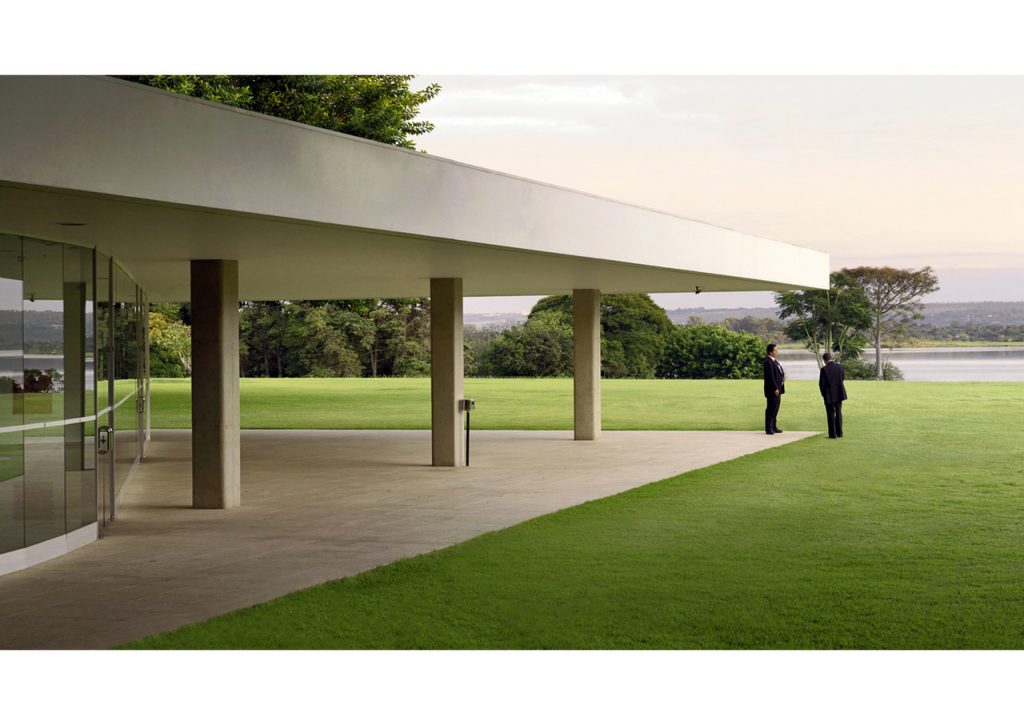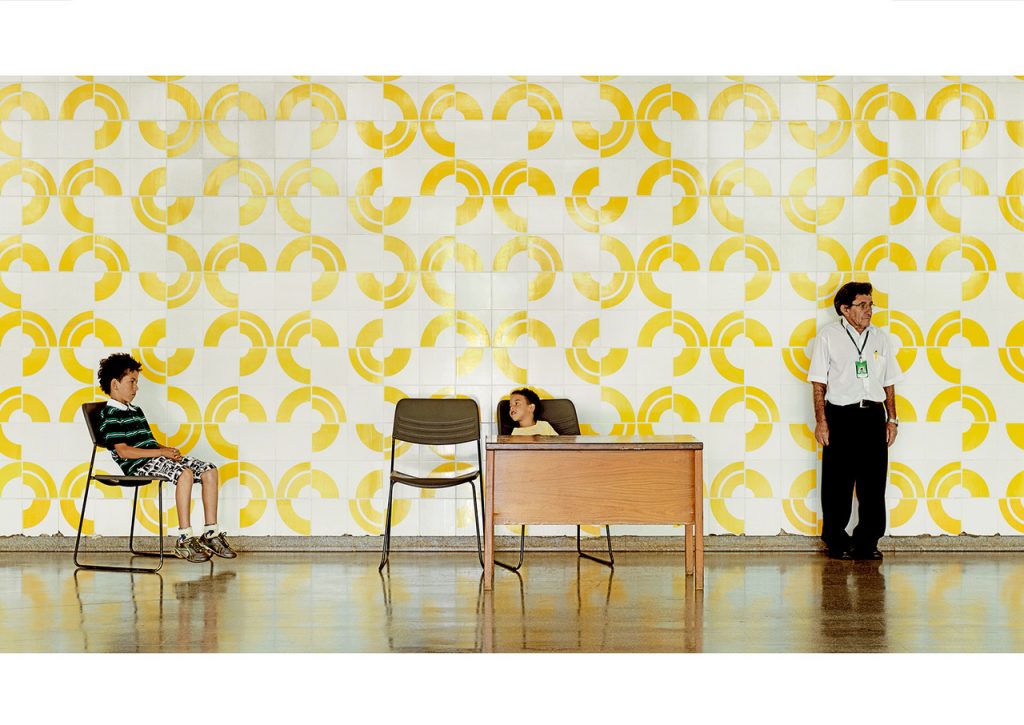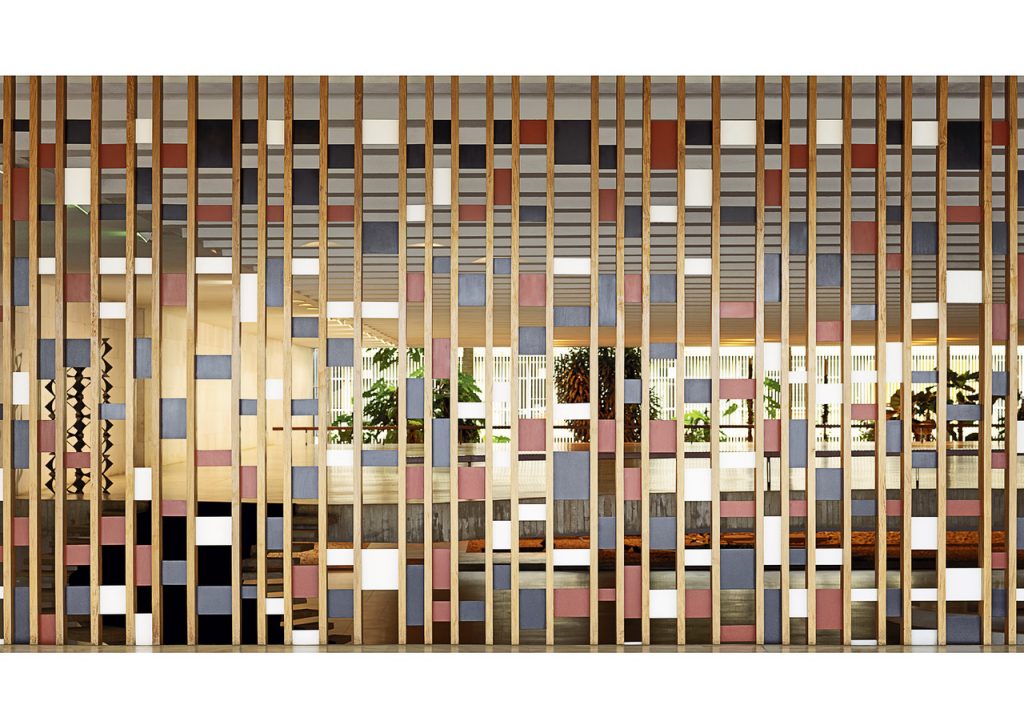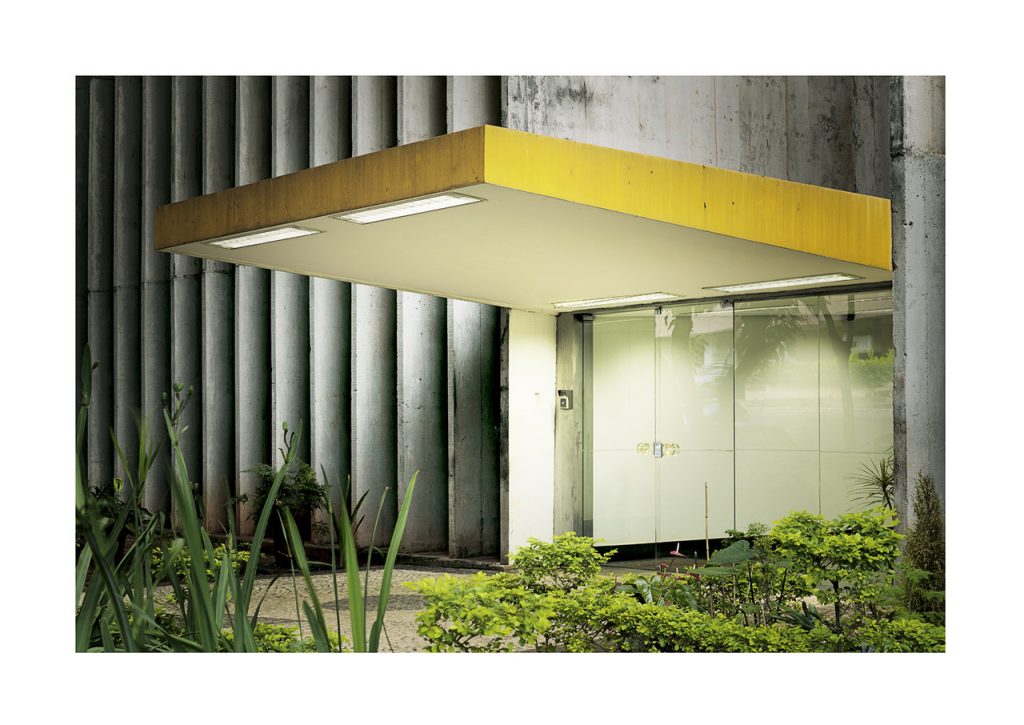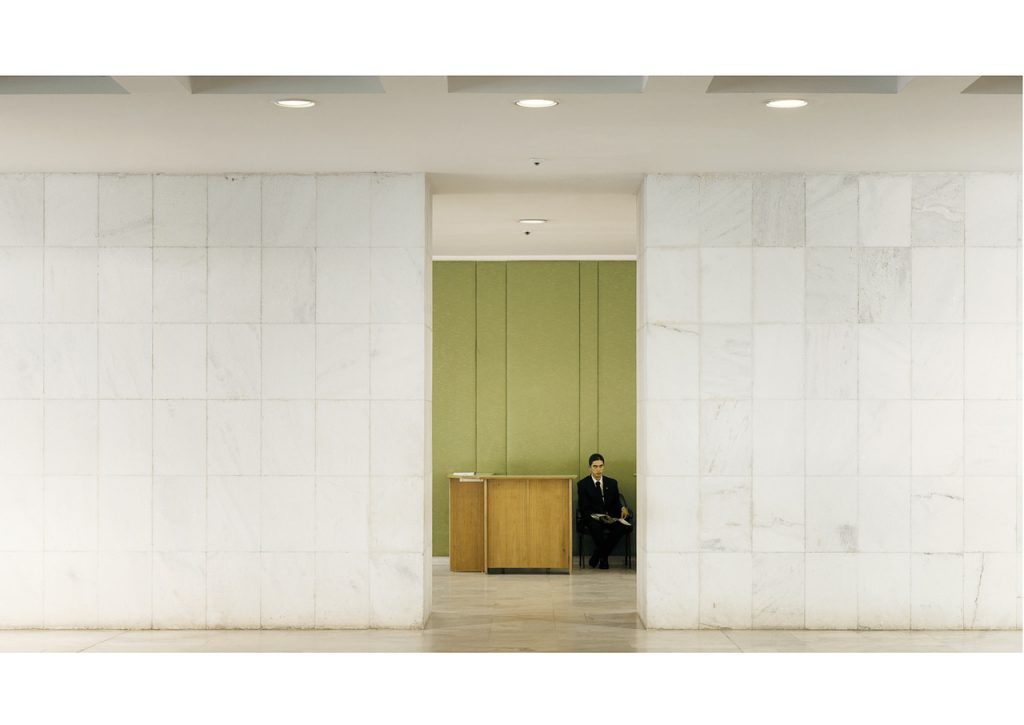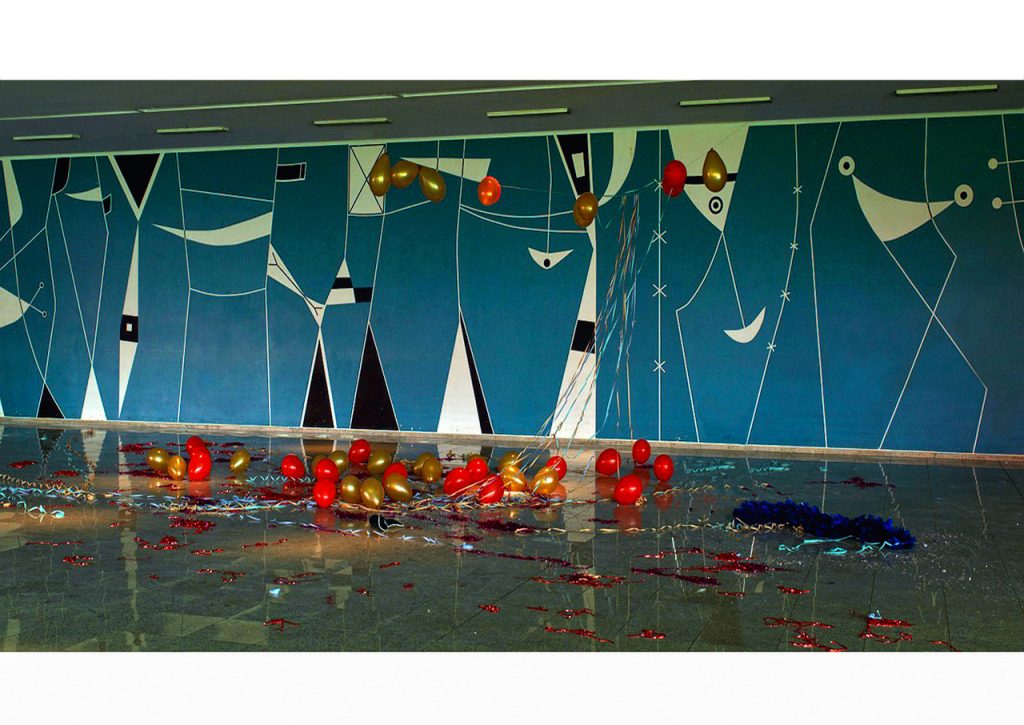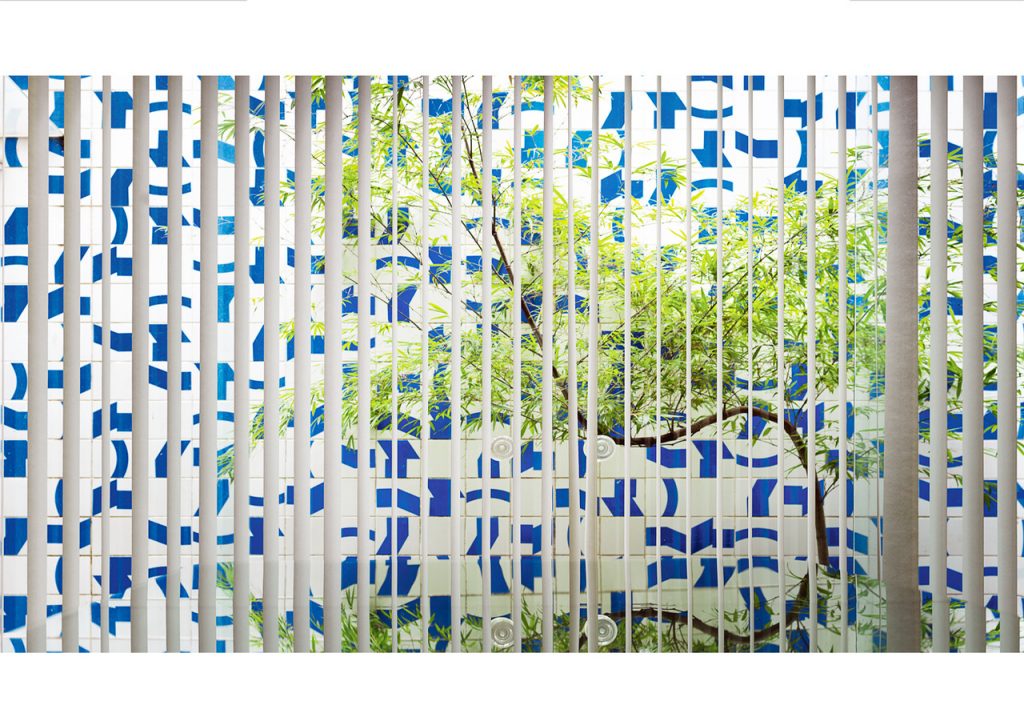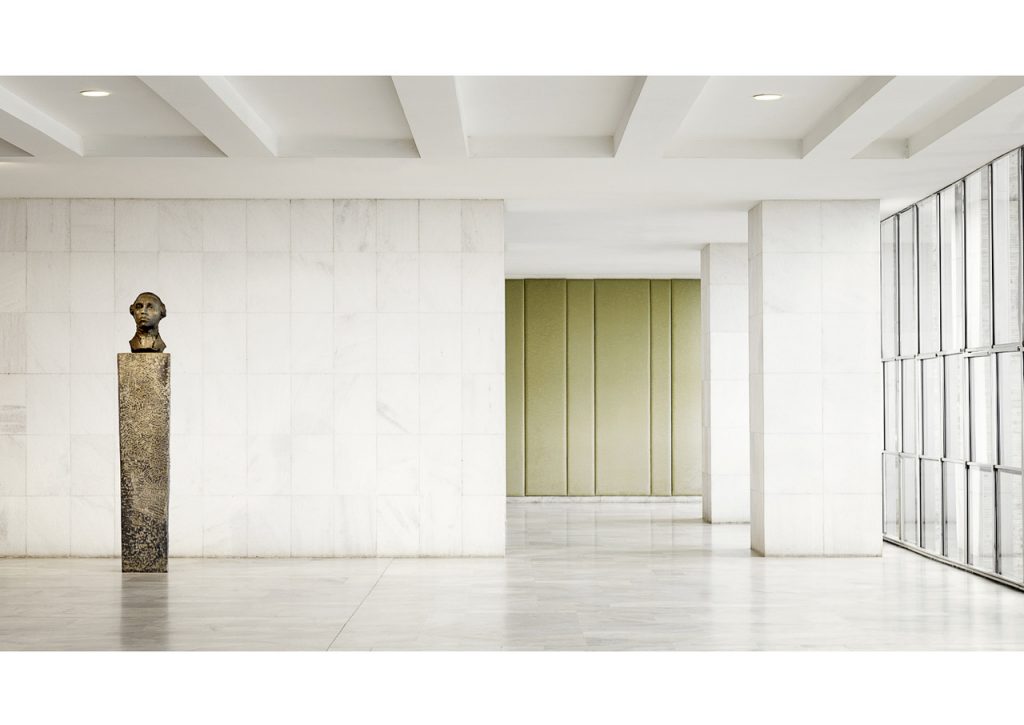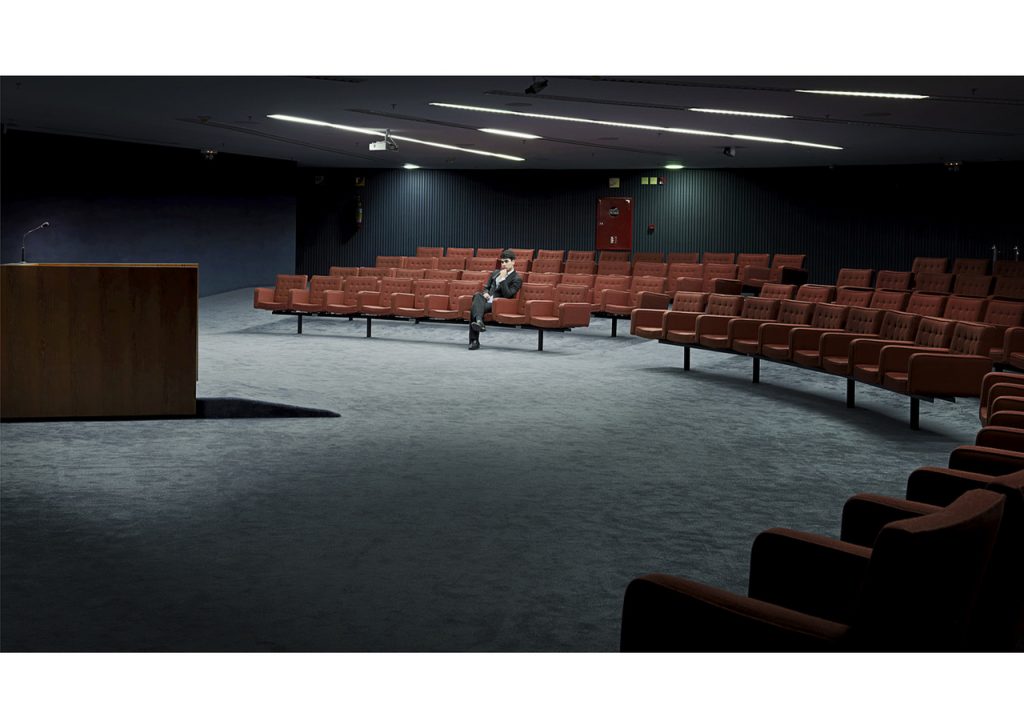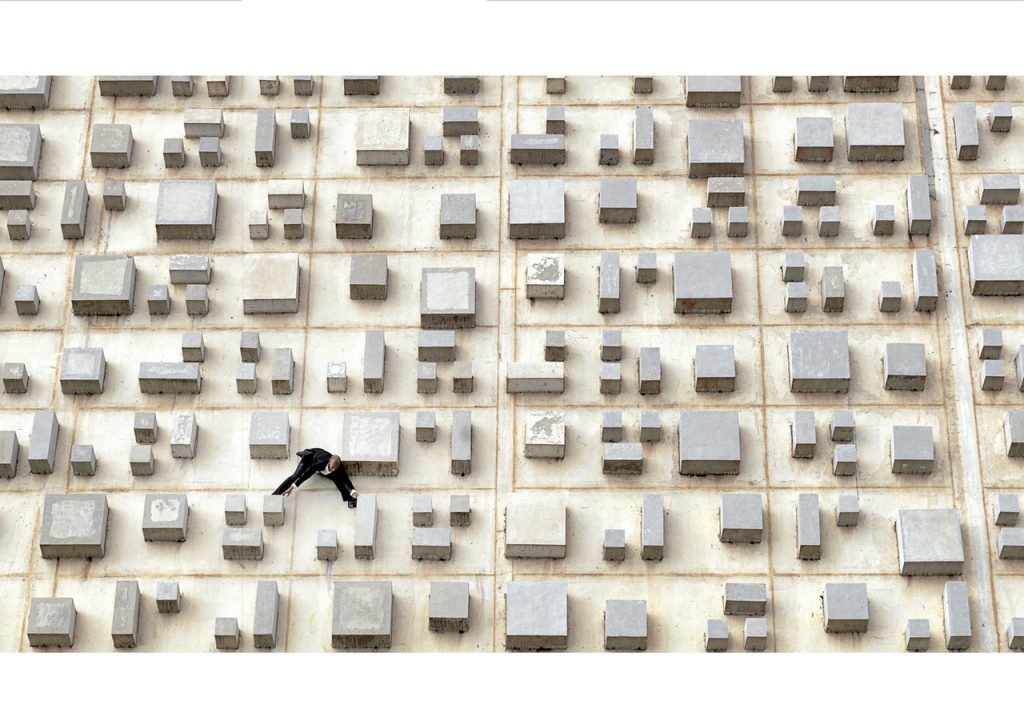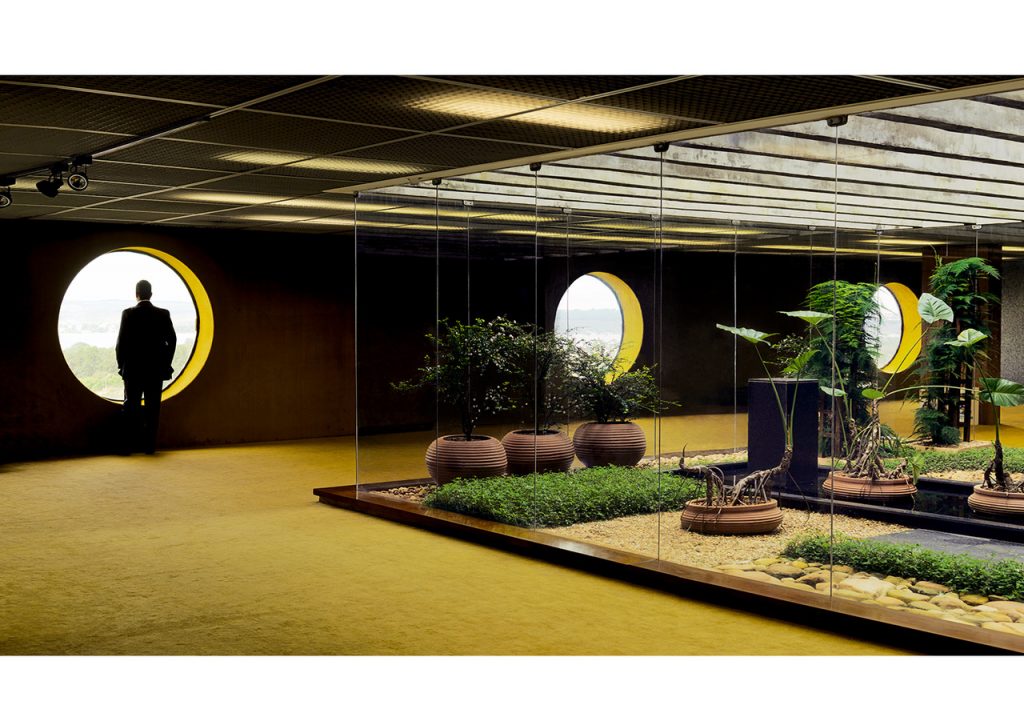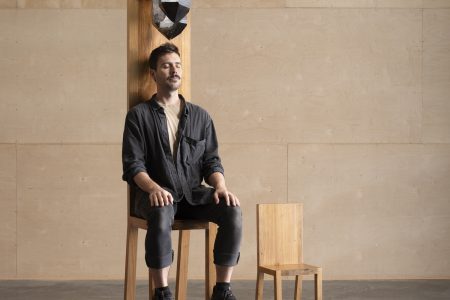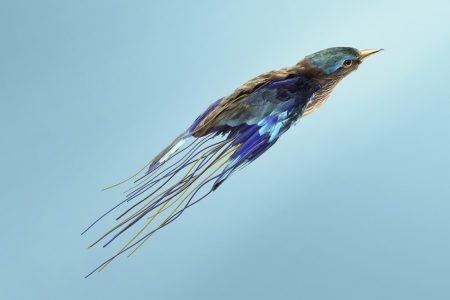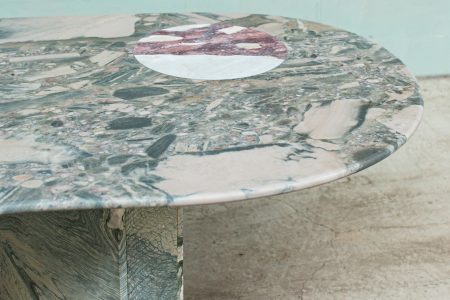Brasília: Freeze Frame of a Future Past
In this extensive conversation between Christian Larsen and photographer Vincent Fournier, we learn about the aesthetics and interests behind ‘Brasília, A Time Capsule’, a series which investigates the architecture, landscape, and people of Brasília (Brazil).
TLmag: How did your interest in Brasília start? Was it a larger project to go photograph utopian cities, or a specific interest in the Brazilian capital itself?
Vincent Fournier (VF): Brasília is very unique, unified aesthetic at the scale of a city. It’s beautiful how this city was composed. It is also very particular because it has been built in only three years, between 1957 and 1960, which, on the scale of the construction of a city, is instantaneous, like a photo that would immortalize a precise moment. The city has been frozen in time and remains the same because of its UNESCO World Heritage status that fixes the plan of the city. Brasilia shows the golden age of the future from the 60’s, just like a beautiful relic of the future. My interest in the city comes from my fascination in stories and mythologies that are questioning the future from technology, science, to architecture. That’s my main playground: space exploration, humanoid robots, transformation of life by technology, utopian architecture… All these projects are linked by their relationship with the way of imagining the future. I like to put the future into historical perspective — as an archæologist would, we can date the different strata of time that make it up –– the future from the past, parallel to our present, or a speculative future that we can imagine. I like the aesthetics and the shape that those “futuristic” universes create and the fact they are questioning the boundaries of what is possible. I went to Brasilia with this idea. When I discovered the city with all those stilt-like columns, I photographed in horizontals only because I had this vision of a «walking city»: a city with legs. I framed the city this way, with a very cinematographic mood, just like a long sequence shoot
TLmag: I had the same impression of Brasília when I was there, that it is a vast horizontal, sweeping landscape. The buildings, their proportions, everything seems to emphasize the horizon, a vanishing point. It was very smart that you chose to frame them in the horizontal format. I assume you were going to Brasília to discover the buildings and their spaces first and foremost. But based on the selection you chose for TLmag, it seems there were little surprises along the way. You may have entered the buildings and been stopped by unusual moments of beauty you may not have seen represented before in photography. We all know the spiral staircase in Itamaraty. But we rarely see the screen by Athos Bulcão, the disintegrating spatial and visual screen/barrier at the top of the stairs. What was your approach?
VF: Your vision of the city built to emphasize a vanishing point is very interesting. To me, it could be the definition of Utopia: a vanishing point, a thought experiment that is questioning the possible. Brasila is a very hypnotic city. I wanted to see everything with a hungry eye. Like when you fish and catch what comes up. I didn’t really plan. With a Brazilian assistant we got up early in the morning and spent the whole day walking. When things got interesting, we stayed longer and photographed.
TLmag: Some of the photographs give the overwhelming sense, which one also feels when visiting the city in person, of empty space, the luxury of being able to inhabit an entire building almost all to yourself. I often had the impression in these spaces that I was alone.
VF: It’s true. It gives also a very fictional mood to the city. You feel like that you’re wandering in a life-size stage, where fiction mixes reality. It reminds me the novel « Fiction » from Jorge Luis Borges where « the cartographers guilds struck a map of the empire whose size was that of the empire, and which coincided point for point with it. Everything is organized in a very mathematical way of seeing space, very abstract, like if the physical world would have been absorbed within a mathematical world. There is a contradiction in this as well. As a guiding concept, Oscar Niemeyer wanted to create a city that was meant to be shared, everyone in it together. But the opposite happened. Instead of drawing people closer, it separated them further away from each other.
TLmag: Everything is rationally subdivided into sectors that divides people rather than integrates them in their multiple activities. So you have the shopping centers, separate from the residential sectors, the Superquadras, which are separate from the administrative and government buildings. I found that this kind of organization is very much in line with modernist thinking, but it doesn’t seem very socialist, which Niemeyer most definitely was. As a counter example, I think of Jane Jacobs with her very sensitive observations of how life is lived in the street with various types of commercial, social, work, and leisure activities happening concurrently at different times of the day and night. Various types of people doing various activities inhabiting the same spaces simultaneously give richness to the city. So if you subdivide all these functions sequestered into their own sectors, the experience becomes strangely militaristic and at the same time empty. The proportions of the city are these long horizontal sweeps, so it’s easy to feel you are the only person living there sometimes. It’s very surreal. But at the same time it feels somewhat similar to LA. At the heart of it, Costa and Niemeyer knew the city would be based on the scale of the car instead of the human being. The distances are for driving. You don’t see people walking. However, Vincent, you don’t seem drawn to the planning aspect in these photos. You’re more drawn to the most beautiful moments of pure architecture and spatial design. I was wondering if you asked these lone suited men to pose in your pictures, of if they just happened to be there? The one photo on the facade of the National Theatre, if seems as though you had to ask the man to go climb it for you. Were you thinking that these solitary spaces needed to be animated by at least one character?
VF: I use architecture like a cinema set. I’m playing with the balance of documentary style—with its distance, very frontal, very objective—but at the same time the images are carefully staged. They are composed of course, in a narrative and aesthetical way. All these figures in the urban landscape, I asked these people to stand there, to give this feeling, to impose this situation. It’s all staged, but all the ingredients are real. These people were actually there. I talked with them and asked if they would mind following my instructions. The photo you’re talking about, the man is a contemporary dancer who happened to be there. I told him it would be interesting for him to propose some moves that will echo the shape of the building. It is an aesthetic intention to give a tension between a big solid concrete composition and something very dynamic on the scale of the small human figure.
TLmag: The photographs you took and the feeling of walking through these spaces are both very abstract. The sense of rhythm, materials, the spaces they define, they are geometric abstractions. Sometimes they disintegrate, sometimes they are orderly, but they are always spacious. It’s an interesting challenge for a photographer to capture this, and you do it beautifully. Your photos have the quality of the best geometric abstraction and architectural photography, but you give us something more. These spaces take on their sense of scale and poetry with the human presence, or lack thereof. I was intrigued by spaces where you sense an event will happen or has already happened, but you can’t guess what happened exactly. Like the party in the hallway of the Brasília Palace Hotel. What went on here? Or the blue stairway ramp at Itamaraty. I have the sense an important government official might ascend or descend the stairs at any moment in a ceremonial display of pomp and circumstance.
VF: That’s right. The image of the Brasília Palace Hotel is completely staged. I bought these balloons and staged everything as if we were there “after the party.”
TLmag: It’s very smart. It plays off the mural in a very beautiful way. So you’re going back to Brasília to take more photos?
VF: Yes. I want to complete this body of work in order to make a book and an exhibition. After my first trip, I wanted to find another place to echo what I found in Brasília, the utopian spirit and a vision of the future. But I didn’t find it. Of course you have Chandigarh but it changed a lot since the original city. I ended up circling back to Brasília, the unique and beautiful Brasilia. That’s why I want to go back.
TLmag: I enjoyed the city as well, in part because it’s a fascinating look at the future past. The way that we used to think cities might be one day. Do you think it was a success? Or do you think aspects of the city fell short of those utopian aspirations?
VF: That’s the contradiction. Utopia is a contradiction about desire. Brasilia could be the desire to turn life into a perfect equation, a global language, a unique vision but reality always resists. If we’re talking about the Superquadras for instance; I was told people were meant to live in the Superquadras as a self-contained life. But people didn’t want to stay in the same Superquadra, they wanted variety. So it didn’t work in the expected way. However, it is a beautiful dream that I respect a lot. We need utopias to question the fields of possibilities and challenge the norms. I am also fascinated by the aesthetic of the city. It is hypnotic. Everything is so perfectly framed and composed. Even the emptiness is part of the composition and echoes with the fullness.
TLmag: The city is very interesting in terms of aesthetics. One has the sense that these modern palaces, that take cues from ancient Roman architecture, stripped down and multiplied to enormous modern dimensions, one has the sense that in these vast empty spaces, if the city needed to, especially on the Eixo Monumental, those large grassy fields, that the city could contain all of the population of Brazil in a given moment if needed. It has this sense of infinite space, that if all Brazilians marched on Brasília, the city would hold them. It feels like the always continuous horizon, that it is infinite. Here’s another contradiction: the city was not planned to contain all of Brazil’s population. It was planned for 500,000 government workers. This is also why it is so strange. The government workers were meant to inhabit the main central plan. But the planners didn’t expect that waves of immigration would come to the city, and so the satellite cities evolved, to accommodate all the other citizens who came here to build their lives. Now the city is 2.5 million. It’s far more than the planners ever envisioned it holding.
VF: The planners didn’t expect the workers to stay there. But I haven’t been to the satellite cities, next time I will go there. It’s like that movie with Jim Carrey, who plays a character on TV like it’s real life.
TLmag: Oh the Truman Show. Like a stage set.
VF: And the satellite city is real life. The real Brasília. I like this movie a lot! To me it echoes the universe of Philip K Dick and the parallel universes.
The Metropolitan Museum of Art in New York City made an acquisition of 5 large formats photographs from Forunier’s Brasilia series in 2016. A book on this series of photographs, which features contributions by Christian Larsen and Beatrice Galilee (Associate Curator of Architecture and Design at The Metropolitan Museum of Art) was published by Noeve in 2019.
TLmag’s sister gallery, Spazio Nobile, has represented Vincent Fournier since 2016.
